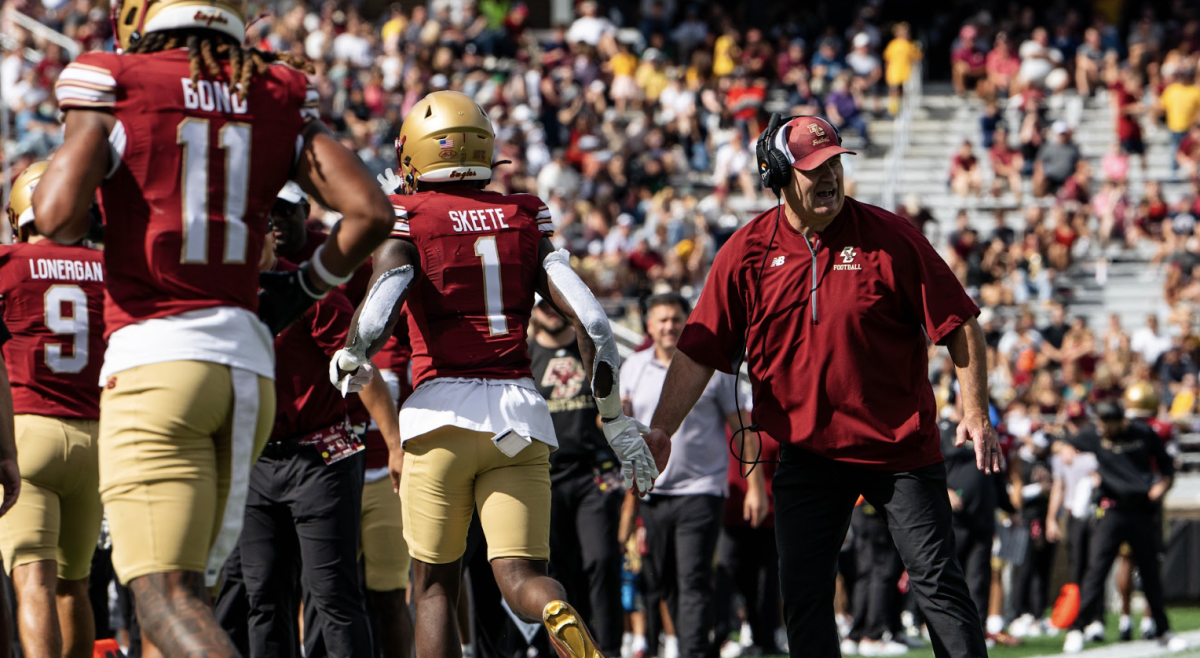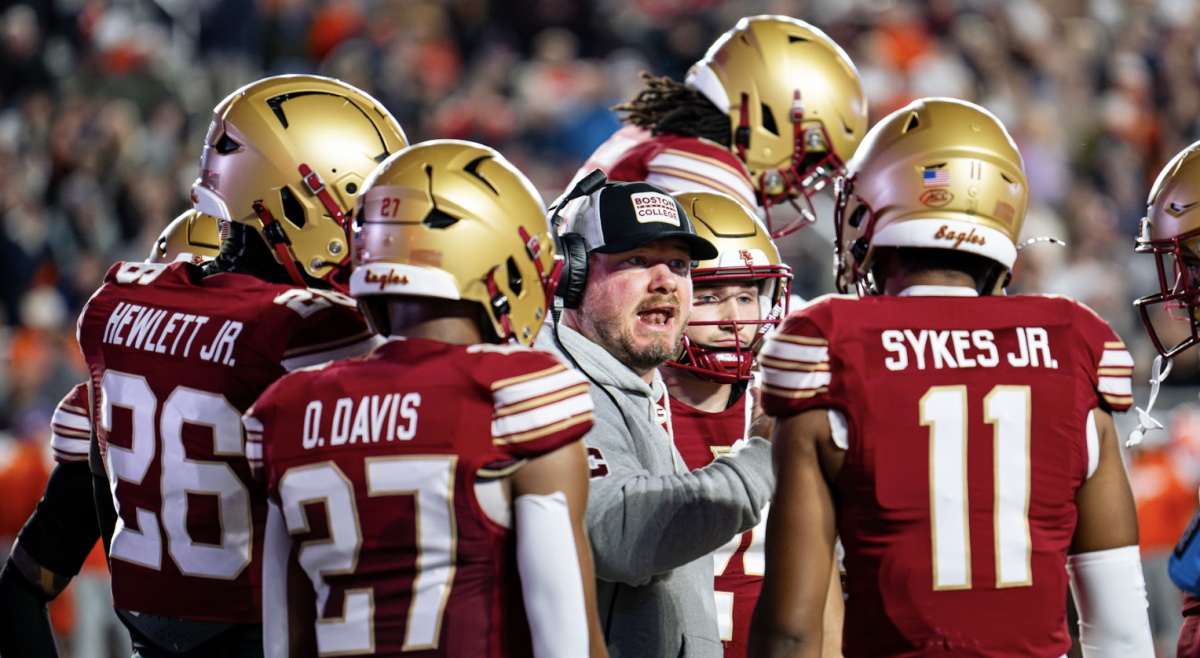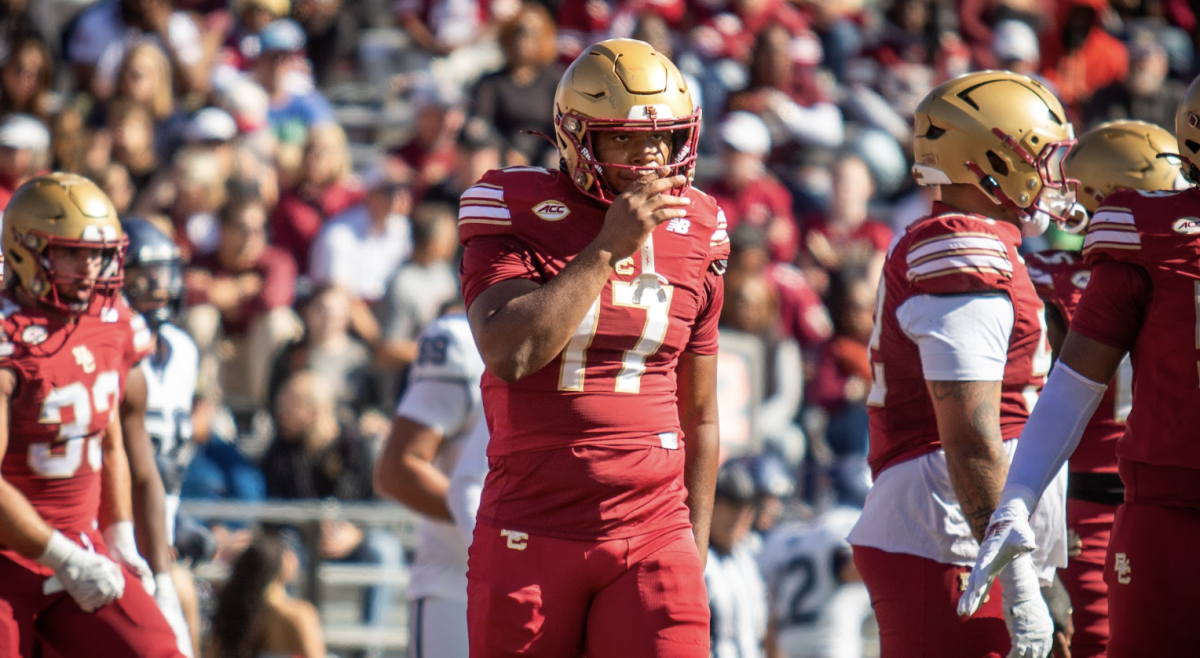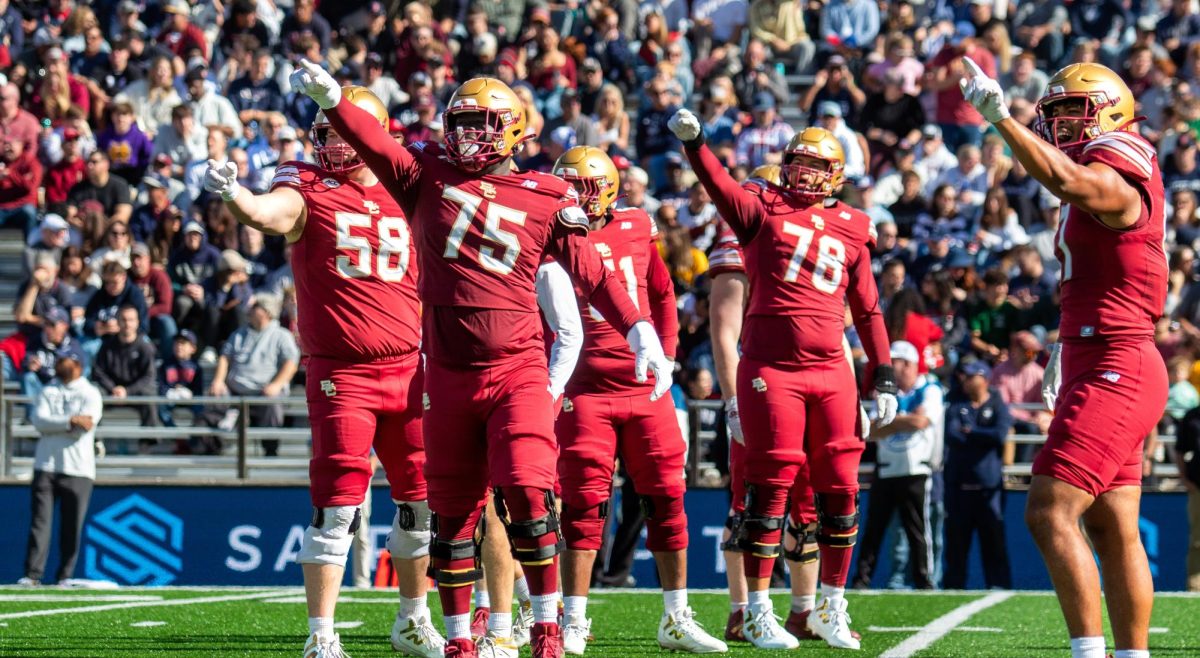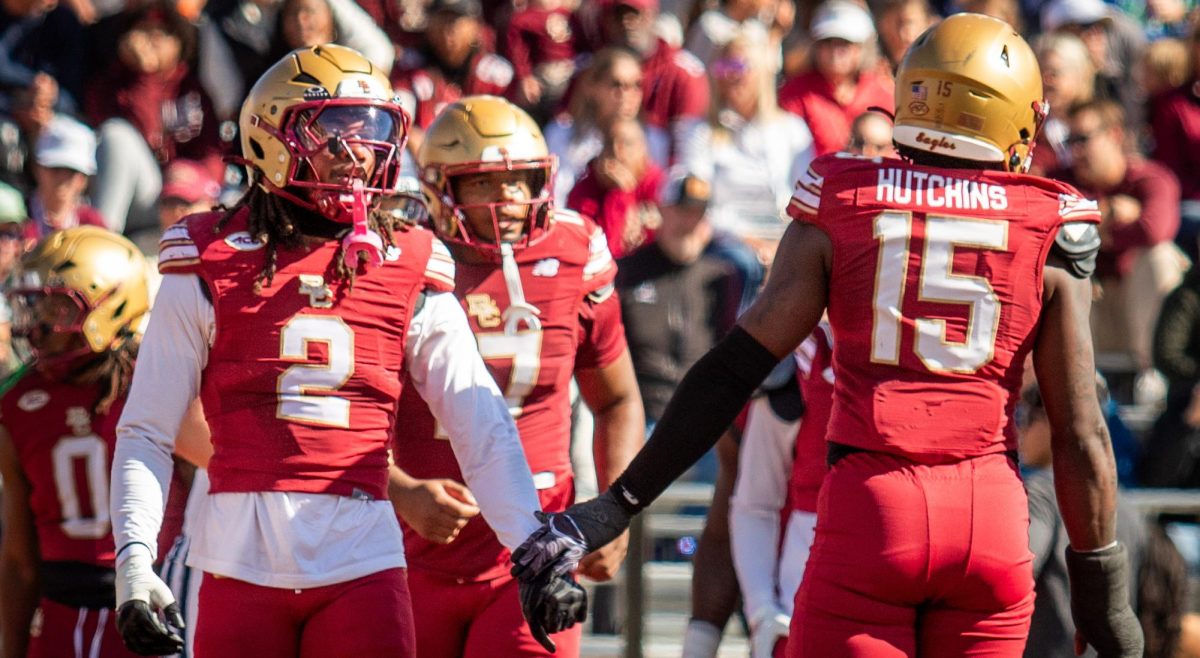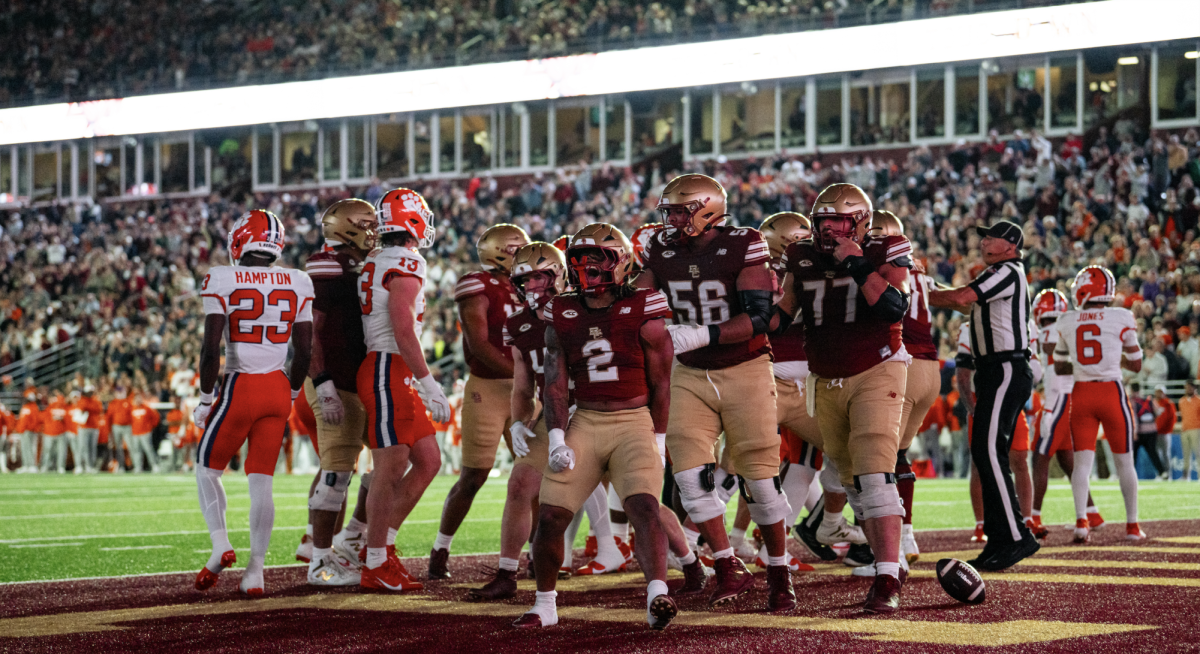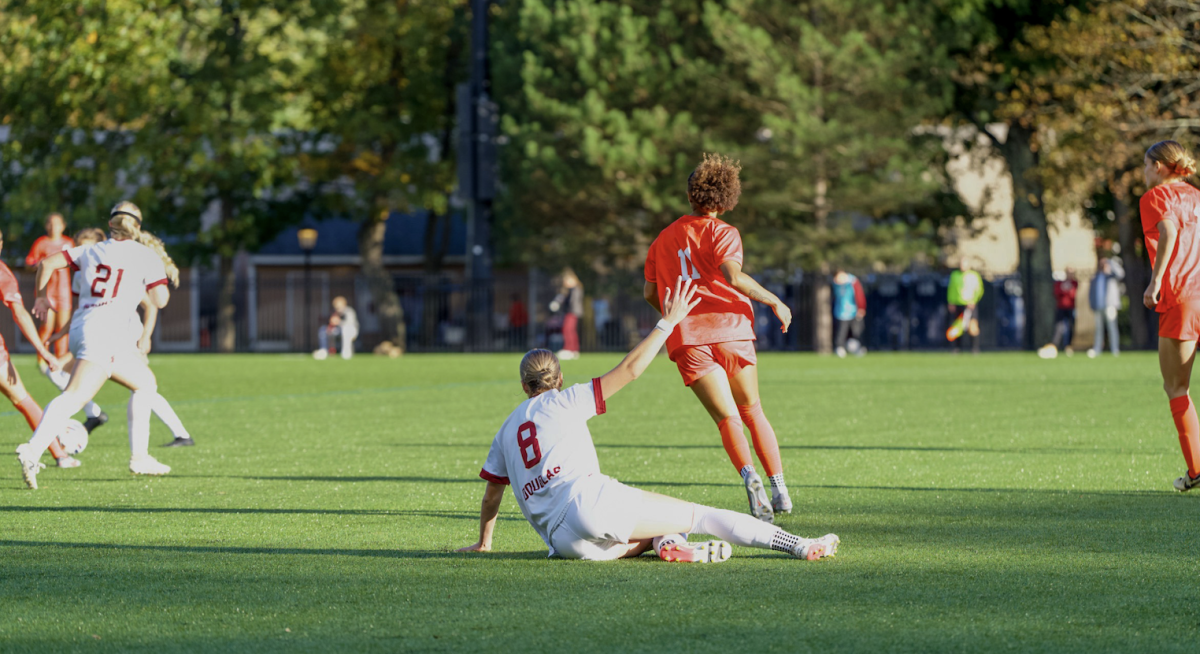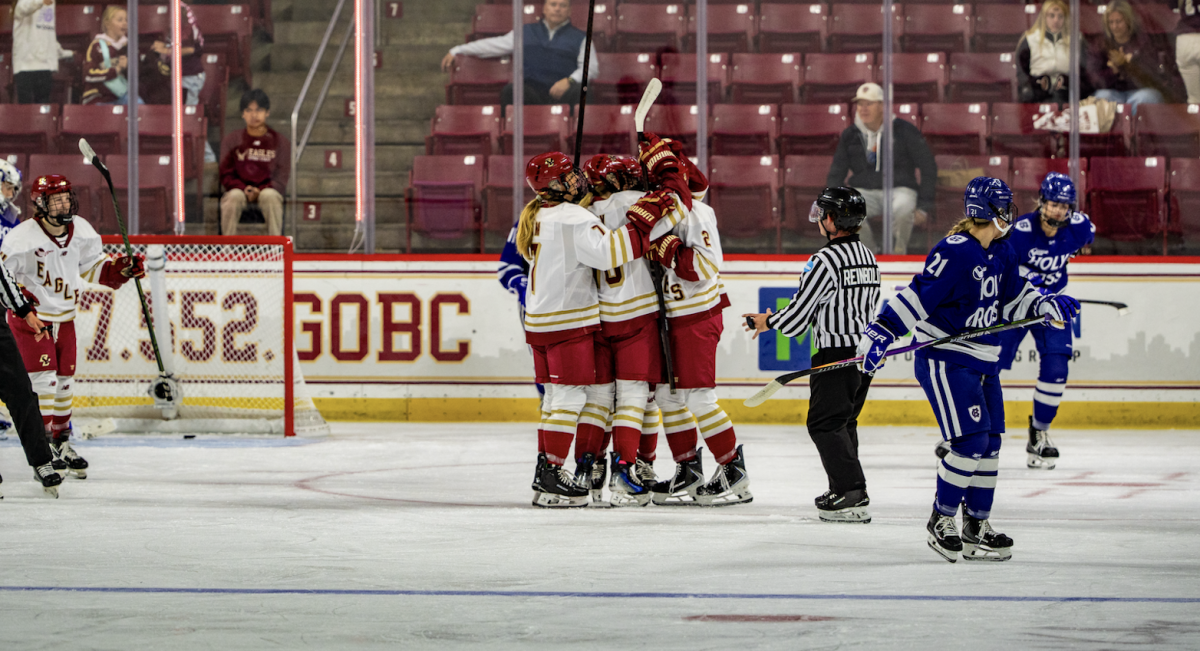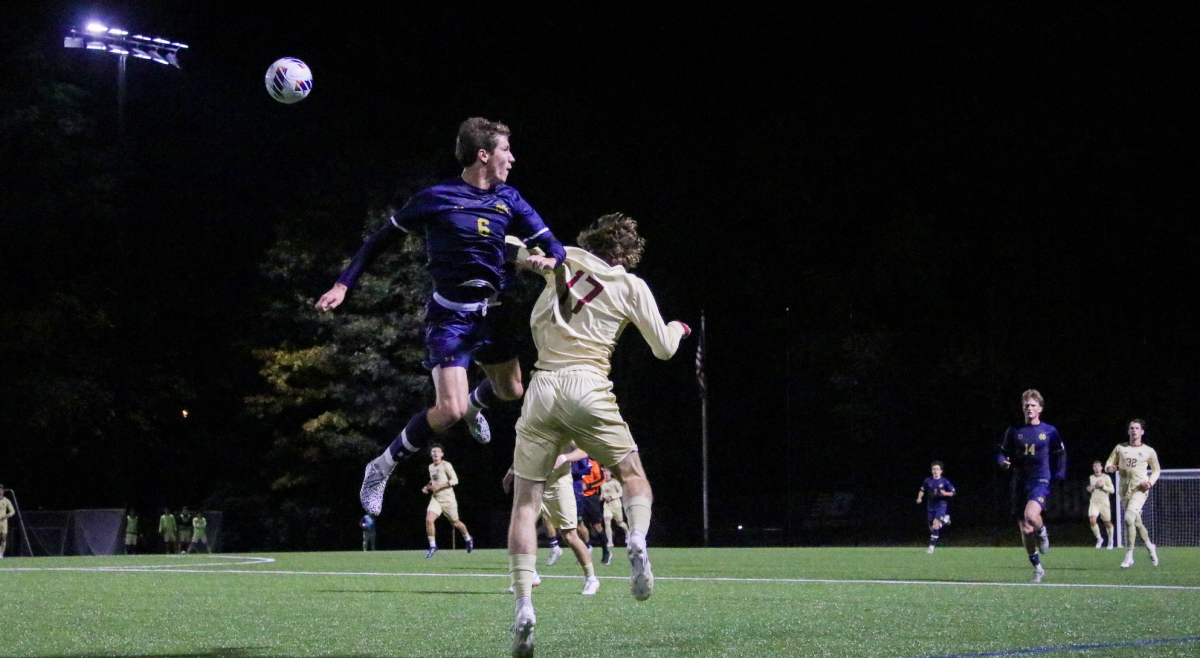Every NFL fan knows the story of Tom Brady, a No. 199 compensatory pick in the sixth round of the 2000 NFL Draft. It didn’t take him long to turn his career around, eventually earning the title of “Greatest of All Time” from his millions of admirers. Hate him or love him, Brady is the epitome of an overperforming, underrated draft pick.
Of course, Boston College football has produced some huge names over the years—Luke Kuechly and Matt Ryan to name a few—but those guys were both drafted on the first day. Although BC hasn’t produced any Brady-level underrated players—no one has except Brady’s alma mater Michigan—some incredibly talented Eagles have flown under the radar in the draft before blossoming into huge successes in the big leagues.
Here are five of BC’s most underrated draft picks over the last 35 years, if foresight could have influenced their selection:

5. Will Blackmon
2006 114th Overall (Fourth Round), Green Bay Packers
BC football has recently been featuring what it dubs “Throwback Theater,” honoring some of the best Eagles’ games in history. Most recently, the Eagles featured BC’s game at West Virginia in 2004, a game in which a junior Will Blackmon made a name for himself. He had seen plenty of action throughout his first two years on the Heights, but a pick-six from the Mountaineers’ 30-yard line was heroic enough to gain some national attention.
Even with a consistently impressive four years playing for BC under his belt, Blackmon still saw himself slip all the way to the fourth round, where he was selected by the Green Bay Packers in the No. 114 spot. But though his prospects initially looked bleak, he strung together a solid 10-year career across four teams: Green Bay, the New York Giants, Jacksonville, and Washington. He rotated between cornerback and free safety in that time, but it took him until he got to Jacksonville to earn a solid starting spot in the secondary. Before then, though, he contributed in other ways.
The biggest benefit of Blackmon was that he was a weapon on both defense and special teams. Often regarded as a less important factor of a football game, special teams is arguably just as vital to the success of a team as offense and defense, and Blackmon made sure everyone knew that. He averaged around 10 yards per punt return and 21 yards per kick return in the early parts of his career.
4. Pete Mitchell
1995 122nd Overall (Fourth Round), Miami Dolphins
Pete Mitchell found relative success at BC, but his draft hopes were largely overshadowed as he entered the Draft the same year as Mike Mamula was drafted No. 7 overall. The two played on opposite ends of the ball—Mamula at defensive end and Mitchell at tight end—but it was clear who would get drafted first.
Looking back on it, Mitchell’s numbers throughout college were good enough to earn a much higher selection than No. 122, as he put together as many yards and receptions his senior season, as some of today’s top tight ends have. With 55 receptions for 617 yards—an average of 11.2 yards per reception—he’s up there with tight ends such as Thaddeus Moss of LSU this season. Mitchell was a First-Team All American in both his junior and senior seasons, so it’s fair to say that his name was out there.
So why was he drafted so low? It’s unclear, but there were two tight ends drafted in the first round, three in the second, one in the third, and three before Mitchell in the fourth, which means there was lots of talent at his position that season. He was drafted by the Dolphins before being traded to the Jacksonville Jaguars during training camp. Mitchell spent his first four seasons in Jacksonville and proved he was worth the money. Mitchell quickly became a regular starter for the Jags before being traded to the Giants for two seasons, then the Lions, and he finished out his career back in Jacksonville.
Mitchell had 279 receptions on 420 targets and averaged 10.3 yards per rush for 30 total touchdowns in his eight-year career. His late selection clearly didn’t hinder his performance on the field, making him a bargain gain and a sorrowful loss for the Dolphins who first traded him away.
3. Matt Milano
2017 163rd Overall (Sixth Round), Buffalo Bills
Matt Milano is the most recent graduate on this list, but that doesn’t make his professional accomplishments any less surprising—albeit pleasantly surprising—to football fans and to the team that drafted him.
As an outside linebacker in Steve Addazio’s inaugural freshman class, Milano saw his role with the Eagles steadily increase over his four years. He recorded 140 tackles—32.5 for loss—in his career, which is respectable, but wouldn’t earn a spot in the first few rounds of the draft.
Since being drafted by the Bills in 2017, his role on the field has only continued to go up. His rookie season, he started just five games—though he played in all 16—and last season, he started 15, including a loss in the Wild Card round of the playoffs. He picked off three passes in 2018, including one that went for 29 yards. Since he was drafted, he’s combined for 228 tackes, 140 of which were solo, and 26 of which were for loss. He’s shown that he’s excellent at penetrating the offensive line and getting to the quarterback, and his lean but powerful 6-foot, 223 pound frame helps him get there.
Milano was the bargain of all bargains, but he’s already shown he’s worth his weight in gold on the defensive side of the ball.
2. Doug Flutie
1985 285th Overall (11th Round), Los Angeles Rams
It’s safe to say that everyone who attended BC in the last 60 or so years knows who Doug Flutie is. In fact, everyone who gave a damn about college football in 1985 regardless of if they had even heard of BC probably knew who Doug Flutie was. But after winning college football’s highest individual honor as a senior, Flutie went on to become the lowest drafted Heisman winner of all time.
Selected in the 11th round (back when there were that many rounds) by the Los Angeles Rams (before they moved to St. Louis and back), Flutie’s talent was largely overlooked. Though his selection number may have been lowered due to the fact that he had already signed with the USFL’s New Jersey Generals months before, it was low nonetheless. He was a star in college, and most people knew that, but very few expected him to succeed at the next level due to his small stature.
But Flutie wouldn’t be stopped. He went on to play a 12-year career in the NFL from 1986 to 1989 and again from 1998 to 2005, with the gap in the middle due to playing in the Canadian Football League for eight years. There, Flutie won three Grey Cups—the Canadian equivalent of the Super Bowl—and broke the single-season record for passing yards. Flutie was named the CFL’s Most Outstanding Player a record six times and racked up 41,355 passing yards and 270 touchdowns in his career. In 2007, he was named the greatest CFL player of all time by The Sports Network, a Canadian media outlet.
As impressive as his achievements were in the CFL, this article is about the NFL. Flutie’s time playing in the U.S. wasn’t nearly as glorified as his time in Canada, but it was worthy of better than an 11th-round pick. He headed to the Chicago Bears without ever playing for the team that drafted him, and he played for four different teams—Chicago, New England, San Diego, and Buffalo—ammassing 14,715 passing yards and 86 touchdowns in his time. In 2001—his first year with the Chargers—Flutie started all 16 games on the season after starting 15 two seasons prior with the Bills.
He’s no Tom Brady, but Flutie more than lived up to the destiny that his 285th-overall selection seemed to lay out for him.

1. Matt Hasselbeck
1998 187th Overall (Sixth Round), Green Bay Packers
Matt Hasselbeck is known today as an analyst for ESPN’s “Sunday NFL Countdown,” but before he was behind the desk, he was making waves on the field. As with everyone else on this list, Hasselbeck was selected late in the process and finished his career as a household name. No one could’ve predicted that the relative unknown from BC—which went 4-7 overall and 3-4 in a non-Power Five conference his senior year—would become a franchise quarterback who led his team to a Super Bowl. Once again, hindsight is 20/20.
From the beginning, Hasselbeck’s prospects of climbing the depth chart were bleak, as the legendary Brett Favre was Green Bay’s go-to signal caller when he was drafted—and Favre was at the height of his career. Hasselbeck would, at best, serve as a backup. Hasselbeck appeared in all 32 games in his first two seasons with Green Bay but started none, as Favre maintained his role in the backfield.
But pretty soon, Hasselbeck caught a break and shipped out to Seattle. It was there that he played 11 of his 17 seasons and earned three Pro Bowl selections as the Seahawks’ starting quarterback. In 2005, he led his team to a 13-3-0 record before winning the NFC Championship and falling to the Steelers in Super Bowl XL. He was traded to Tennessee in 2011, where he played for two years, before finishing out his career with Indianapolis.
Featured Image by Mike Morbeck via Wikimedia Commons


